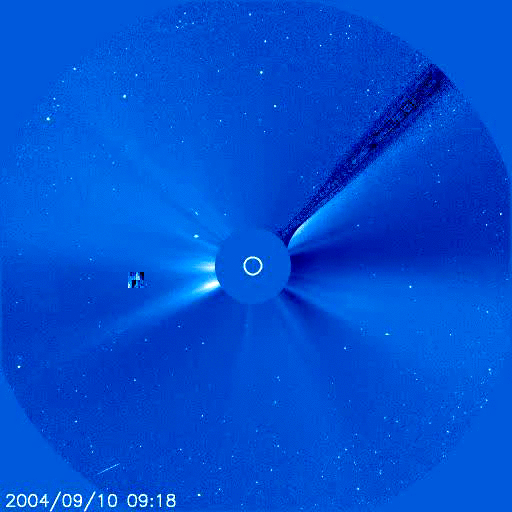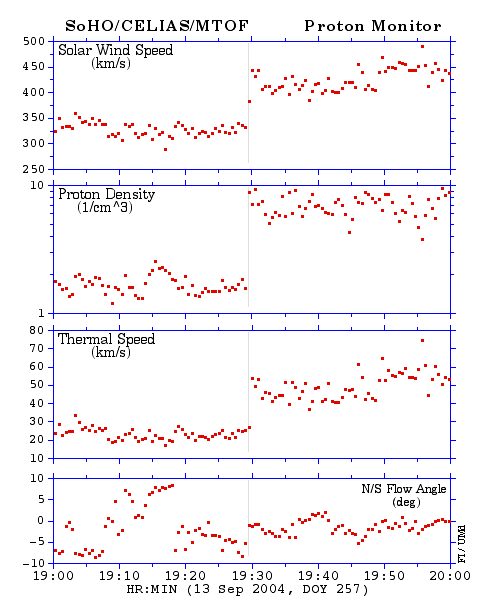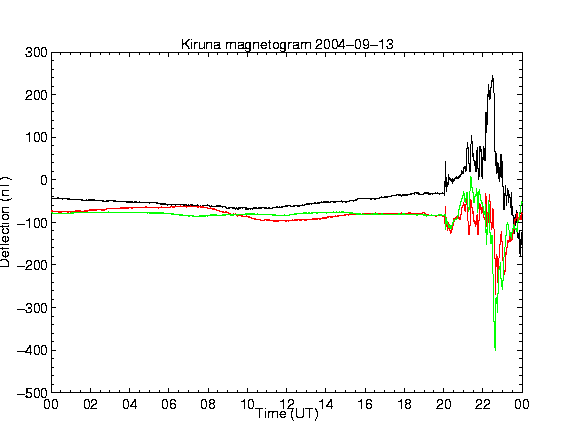

Sunspot group 06 (NOAA 0669) is still in the running as it released an M-flare on September 12, together with an earth-directed CME. After a series of backsided CMEs (coronal mass ejections) last week, sunspot group 12 (NOAA 0672) finally sent out a CME in the direction of the Earth. The plasma cloud left the Sun during a long duration event on September 12 and was first visible in LASCO/C3 at 01:18UT (see the figure and movie above). We didn't have to wait a long time for the shock front to arrive at Earth: less then 43 hours. SOHO/Celias detected on September 13, around 19:30UT a shock in several physical quantities like the solar wind speed, density, thermal speed (speed of random motions of particles in gas cloud) and flow angle. The ACE-satellite measured some disturbances in the L1 point of the interplanetary magnetic field and the north-south component of it. The orientation of this magnetic field is crucial for the onset of a geomagnetic storm. This process is called magnetic reconnection: coupling of the interplanetary and the geomagnetic field. The strength of geomagnetic disturbances is measured in terms of an index K ranging between 0 and 9. The ground-based station Izmiran measured a local K of 5 at the arrival of the shock front, this is a minor storm.

The figure above shows us some physical quantities measured by Celias on board of the satellite SOHO. The abrupt transition indicated by the grey line is a shock generated when the CME passes the SOHO at the L1 point.

The figure above shows the deviation from the expected means of the three components of the geomagnetic field vector at a certain location on earth. This magnetometer is located at Kiruna, Sweden.





